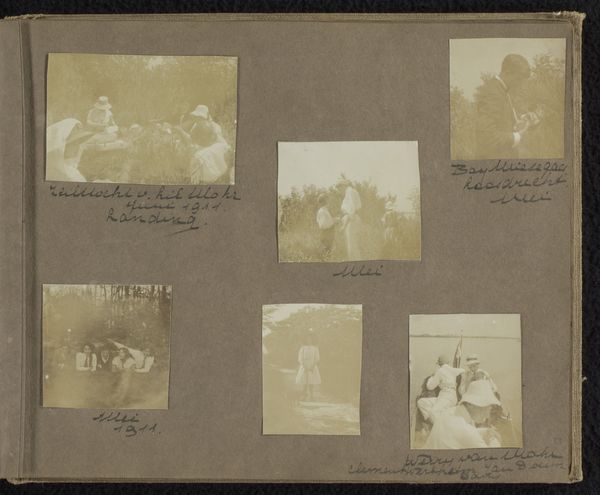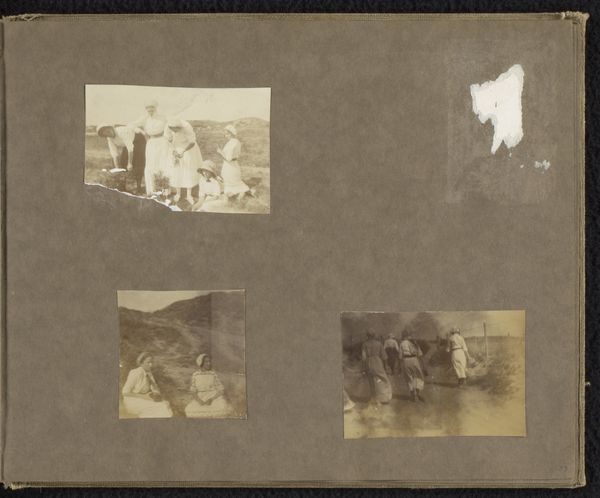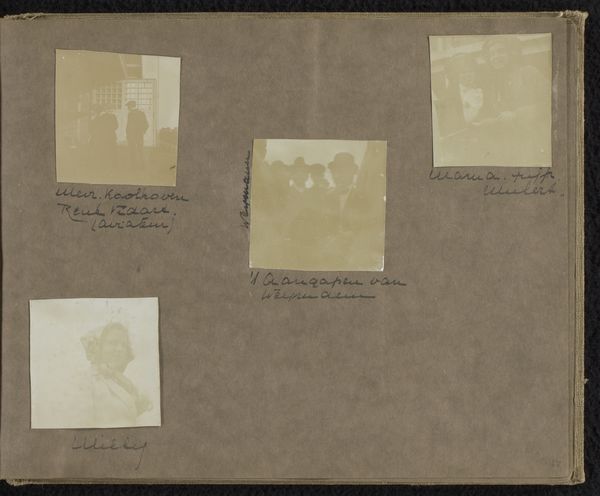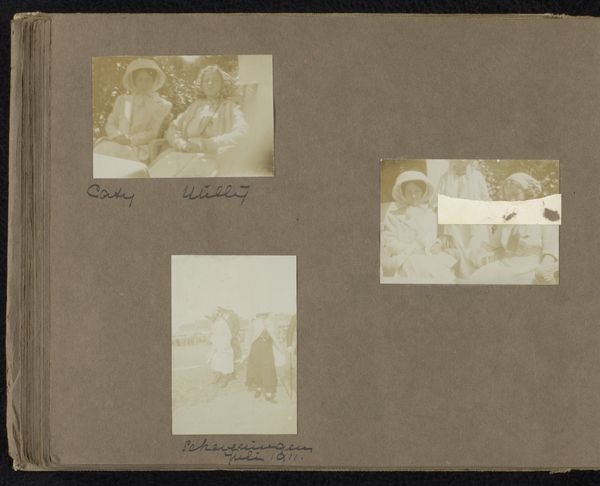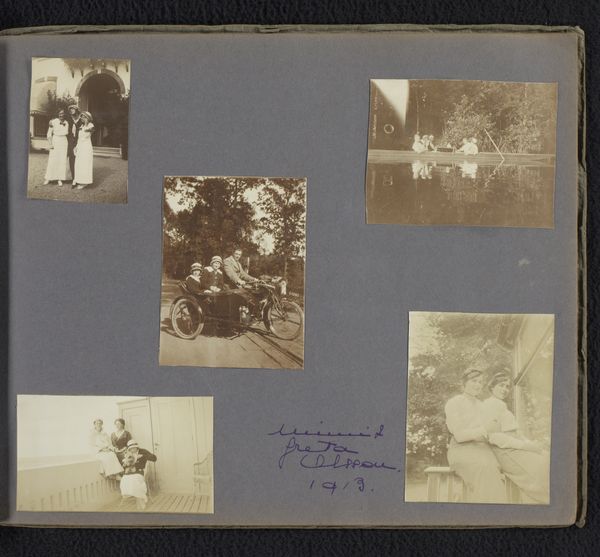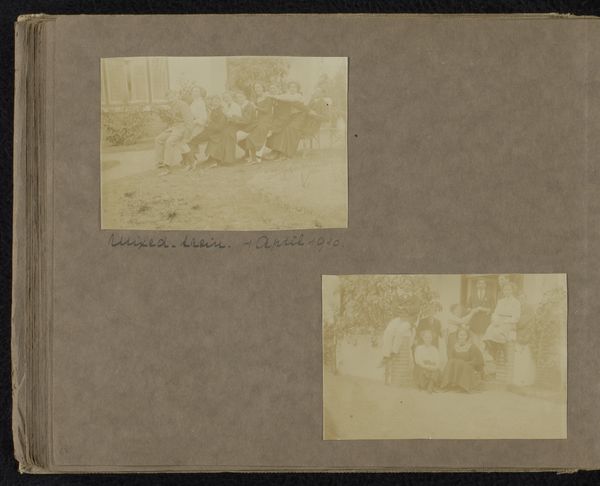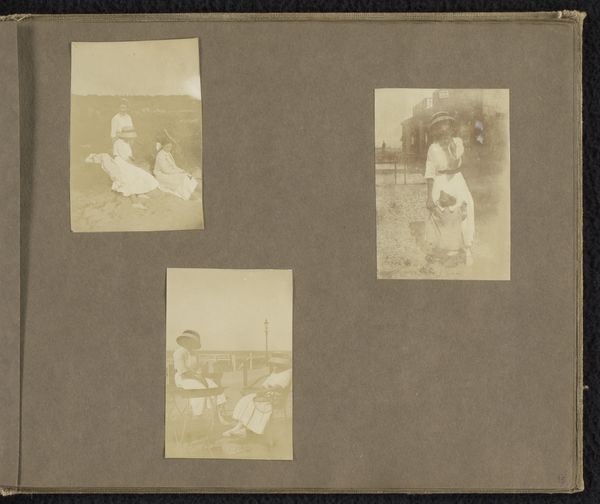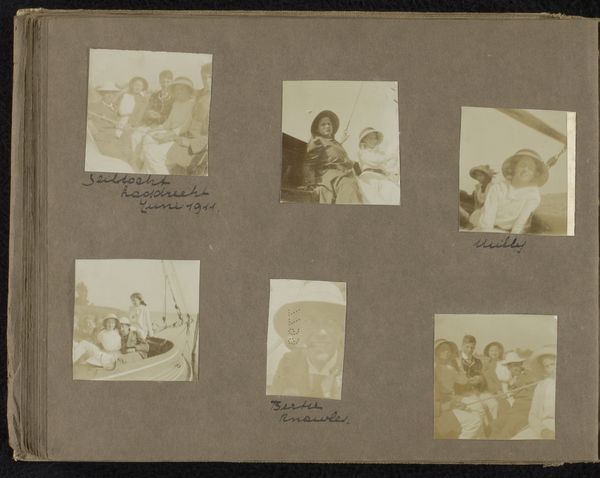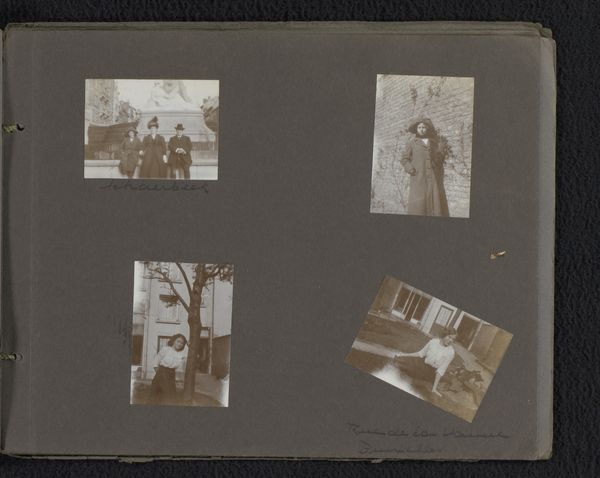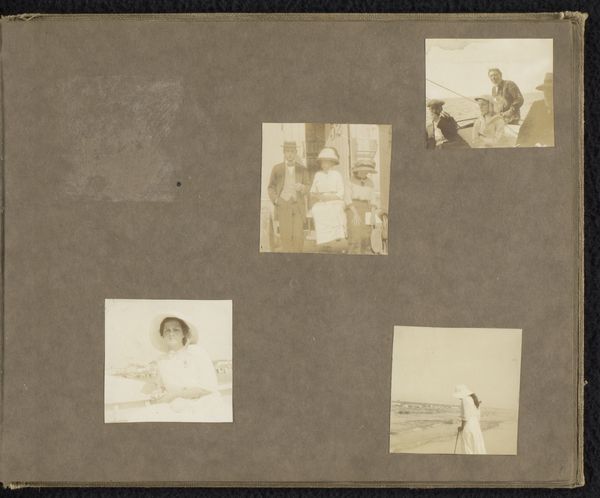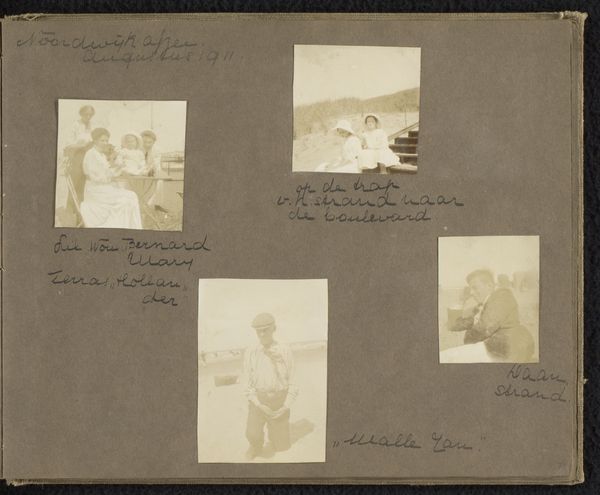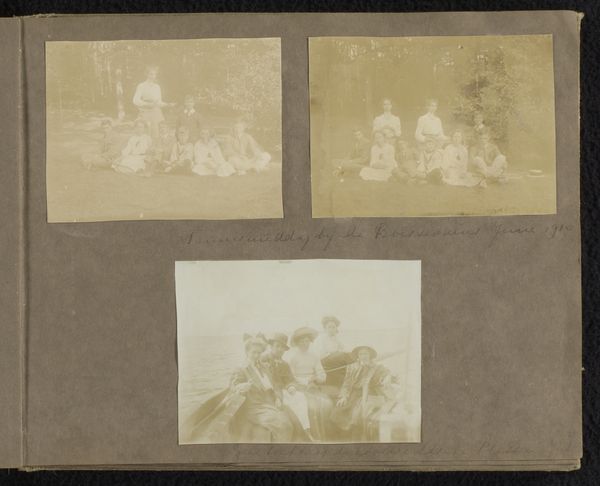
Vier foto's van vrienden van Loentje Onnen bij de tennisbaan en bij de Loosdrechtse Plassen Possibly 1911 - 1915
0:00
0:00
photography, gelatin-silver-print, albumen-print
#
portrait
#
still-life-photography
#
pictorialism
#
landscape
#
photography
#
gelatin-silver-print
#
ashcan-school
#
albumen-print
Dimensions: height 203 mm, width 253 mm
Copyright: Rijks Museum: Open Domain
Editor: So, we’re looking at “Vier foto’s van vrienden van Loentje Onnen bij de tennisbaan en bij de Loosdrechtse Plassen," a series of four photographs from around 1911-1915, likely gelatin silver prints. I find it really interesting how personal these snapshots feel, like glimpses into someone’s summer. What catches your eye about these images? Curator: I'm immediately drawn to the materiality of these photographs as objects, considering both their creation and function within a specific social and economic context. The albumen and gelatin silver printing processes were quite established then. To what extent did that fact contribute to their popularity as a means for documentation, memory, or even constructing a particular self-image? Editor: That's a great point about the materials and self-image. So, it wasn't just about snapping a photo; the printing process itself was part of shaping the narrative? Curator: Precisely. Think about the labor involved, the accessibility of these processes, and who had the resources to engage with photography. Also, consider the social dynamics captured. We see leisure, friendship, and outdoor activities. How might these scenes reflect the values and aspirations of the emerging middle class at the time? Editor: That connects the photos to broader social trends. The accessibility would’ve allowed more people to document their lives, moving away from only the wealthy having portraits. Curator: Exactly. And note how the photographs are presented together, like pages in a personal album. That layout creates its own narrative too. Did the placement have meaning? Or contribute to the exchange of ideas, aesthetics or aspirations of the artist? What would you consider significant, considering it would have been hand placed with an intention to tell a story, beyond that of a single image? Editor: Seeing it that way adds so much depth. I hadn't thought about how the materials and process tie into larger economic and social shifts and the material construction of an identity. Curator: Precisely! We often get lost in subject matter and fail to acknowledge the complex web of materials, labor, and consumption that brings an image, like any work of art, into being. Now, do we know for sure who made these photographs, or does the creation process involve an equal social exchange, a co-creation, in essence? Editor: Definitely gives a fresh perspective. Thanks!
Comments
No comments
Be the first to comment and join the conversation on the ultimate creative platform.

